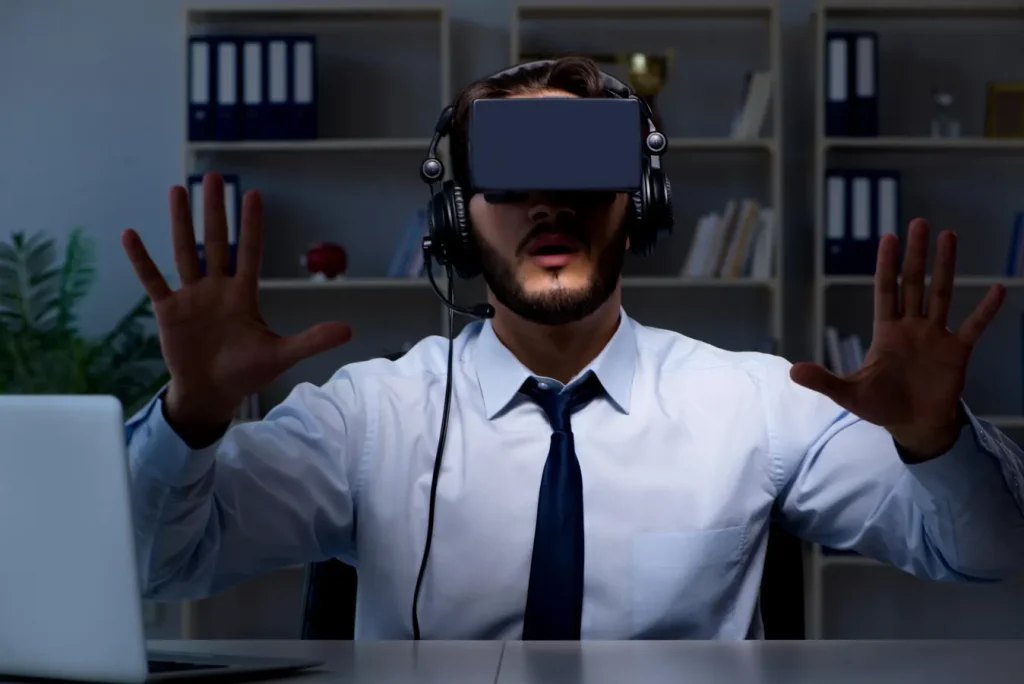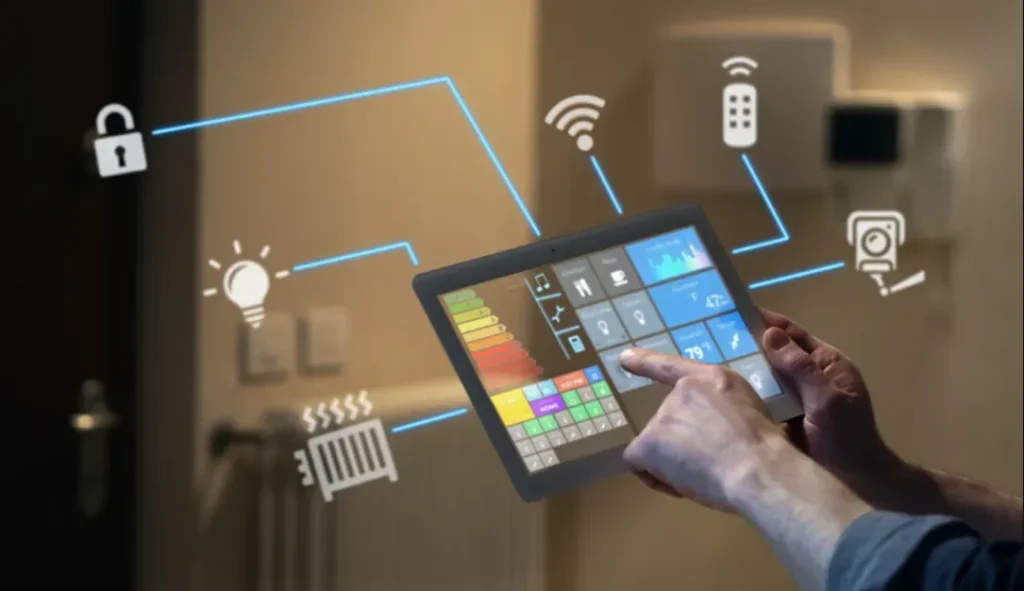
The first time I slipped on a virtual reality headset, I was standing on the edge of a skyscraper. My knees buckled as I looked down — the sensation was so real, my brain couldn’t tell the difference. And yet, I was in my living room. That moment changed everything I believed about technology and immersion. Fast forward to 2025, and virtual reality (VR) has matured beyond novelty. It’s not just about games anymore — it’s about working remotely, designing in 3D, collaborating globally, and entering new realms of productivity.
If you’re exploring VR for gaming or work, the options can feel overwhelming. Do you go with the ultra-premium experience of the Meta Quest Pro, or opt for a budget-friendly choice like the Pico 4? What about cross-functionality — can one headset really balance both gaming fun and office focus? Let’s take a deep dive into the best virtual reality headsets for both worlds — and help you make the right choice for your needs, lifestyle, and budget.
The New Landscape of VR in 2025
Virtual reality isn’t some far-off futuristic dream. It’s here, and it’s evolving fast. According to a report by Statista, the VR market is projected to grow to over $22 billion by the end of 2025. This explosion is powered by increasing adoption across gaming, remote work, training simulations, and even therapy. Headsets now come with sharper displays, better comfort, longer battery life, and highly responsive tracking systems. For professionals, platforms like Spatial and Microsoft Mesh have turned headsets into collaboration tools, bridging continents in real-time meetings. For gamers, it’s about next-level immersion — where you don’t just play the game, you live it.
Meta Quest 3: The All-Rounder That Bridges Gaming and Work
The Meta Quest 3 is the successor to one of the most popular standalone VR headsets of all time, and it’s a near-perfect blend of performance and practicality. With its high-resolution pancake lenses, full-color passthrough, and Snapdragon XR2 Gen 2 processor, it delivers stunning graphics for games like Beat Saber or Resident Evil 4 VR — while also allowing you to multitask with virtual desktops for work.
I use my Meta Quest 3 with Immersed, a remote work platform that turns your room into a virtual office with multiple floating monitors. The headset is light, easy to wear for long periods, and doesn’t require a high-end gaming PC (though it can connect to one for more demanding titles). It’s a favorite among hybrid workers who game after hours.
Meta’s ecosystem also benefits from a rich app store, regular updates, and powerful integrations with platforms like Workrooms for professional collaboration. If you want a one-device solution that transitions smoothly between work and play, this is it.
Explore more about Meta Quest 3 on Meta’s official site.
Apple Vision Pro: The Luxury Option for Creators and Professionals
If you’re a creative professional, designer, or entrepreneur looking for the pinnacle of mixed reality, the Apple Vision Pro is the headset that redefines spatial computing. At nearly $3,500, it’s not for everyone — but for those in 3D modeling, virtual collaboration, or immersive design, it’s a powerhouse.
Unlike traditional VR headsets, Vision Pro focuses on augmented reality, blending the digital with your real-world environment. This makes it perfect for tasks like editing video timelines in thin air or attending meetings with ultra-realistic avatars through FaceTime spatial video.
The micro-OLED displays are among the sharpest available, and the eye-tracking navigation eliminates the need for physical controllers. Apple’s seamless ecosystem also means that your iCloud files, Safari tabs, and Mac apps follow you into this digital dimension effortlessly.
The Vision Pro isn’t built for gaming in the traditional sense, though platforms like Apple Arcade are expanding its entertainment value. Still, it’s best suited for productivity and immersive content creation.
Read more about the Vision Pro on Apple’s product page.
Valve Index: Precision, Power, and PC Gaming Glory
When it comes to PC-powered VR, the Valve Index still holds its ground in 2025 as one of the most precise and immersive options available. Its wide field of view (up to 130 degrees) and finger-tracking controllers offer an experience that’s highly responsive and deeply tactile.
Gamers adore the Index because of its unparalleled compatibility with SteamVR, where iconic titles like Half-Life: Alyx truly shine. It requires a gaming PC, external base stations, and some setup space — but if you’re looking for top-tier visual fidelity and game depth, it delivers in spades.
While it’s not designed primarily for productivity or remote work, third-party apps like Virtual Desktop can turn your gaming rig into a multi-monitor workspace.
Check out the latest features at Valve’s official site.
HTC Vive XR Elite: Enterprise-Ready with Flexibility
HTC has carved out a niche for professionals with the Vive XR Elite, a compact yet powerful headset aimed at both immersive training and productivity. Unlike the earlier Vive Pro models, the XR Elite is untethered and supports mixed reality — making it suitable for corporate settings, healthcare, and design simulations.
What makes this headset stand out is its modularity. The battery strap is removable, and the headset can be connected to a PC for more intensive tasks. HTC also integrates seamlessly with Vive Business, a platform that supports data privacy, deployment management, and enterprise-level security — features often overlooked in consumer-first devices.
If your focus is more on enterprise applications and training rather than gaming, the XR Elite may be your best bet.
Learn more about the XR Elite through HTC’s official platform.
PlayStation VR2: Console Gaming Reimagined
Sony’s PlayStation VR2 continues to be a game-changer for console-based VR enthusiasts. Designed specifically for the PlayStation 5, it supports high-end features like HDR OLED displays, eye tracking, adaptive triggers, and haptic feedback — all designed to make games feel more alive.
Titles like Horizon Call of the Mountain are tailor-made to show off its cinematic capabilities. However, it’s strictly a gaming headset — there’s no native productivity support or virtual desktop mode. But for those looking for a comfortable, plug-and-play system with jaw-dropping visuals and exclusive games, PS VR2 is a phenomenal choice.
Check out the PS VR2 lineup on PlayStation’s VR2 page.
Pico 4: Affordable and Surprisingly Capable
For those who want to dip into VR without breaking the bank, the Pico 4 offers a lot of value at a mid-range price. Developed by ByteDance, the company behind TikTok, it delivers 4K+ resolution, decent passthrough, and a surprisingly robust app ecosystem.
While it doesn’t have the same library or software polish as Meta’s offerings, it supports popular apps like Virtual Desktop and YouTube VR, making it suitable for both casual gaming and light productivity. If you’re budget-conscious or a first-time buyer, this is a very solid starting point.
Dive deeper into the Pico 4 via Pico Interactive’s homepage.
How to Choose the Right VR Headset
The “best” VR headset really depends on your primary use case. If gaming is your top priority, and you already own a gaming PC or a PS5, options like the Valve Index or PS VR2 will suit you perfectly. If you want a mobile device that lets you host meetings, design workflows, and occasionally battle zombies, the Meta Quest 3 or HTC Vive XR Elite strike the perfect balance.
For creative professionals working in design or video, the Apple Vision Pro is a futuristic — albeit expensive — gateway into spatial computing. Beginners or casual users, meanwhile, will feel right at home with the budget-friendly Pico 4.
FAQ
Can one VR headset truly handle both gaming and professional work?
Yes — especially models like the Meta Quest 3 and HTC Vive XR Elite. These headsets offer app support for both productivity tools (like Immersed or Workrooms) and rich gaming experiences. Flexibility is key, and modern VR platforms are built with multipurpose use in mind.
Is a PC required for using high-end VR headsets?
Some headsets like the Valve Index and HTC Vive Pro require a gaming PC for full functionality. Others, such as the Meta Quest 3 and Pico 4, are standalone and can optionally connect to PCs via apps like Air Link or Virtual Desktop.
What’s the difference between virtual reality and mixed reality?
Virtual reality immerses you completely in a digital environment, blocking out the real world. Mixed reality blends digital elements with your actual surroundings, allowing for interaction with both. Devices like the Apple Vision Pro and Vive XR Elite focus heavily on mixed reality.
Are VR headsets safe for long-term use?
In moderation, yes. It’s important to take breaks, adjust for proper fit, and ensure your play/work space is safe. Repetitive use without breaks may lead to eye strain or motion discomfort.
What kind of internet connection is needed for VR collaboration?
A stable and fast internet connection (at least 50 Mbps) is recommended for smooth experiences in collaborative VR apps like Spatial or Workrooms. Latency can impact both video quality and audio sync in meetings.
Conclusion: Stepping into the Future with the Right Gear
Whether you’re dodging virtual arrows in a fantasy realm or mapping out a product launch with colleagues across the globe, VR has become more than just a tool — it’s a bridge between worlds. Choosing the right headset isn’t just about specs or brand loyalty; it’s about how you want to live, work, and play in 2025 and beyond.
Take the time to assess your needs. Are you a gamer hungry for immersion? A designer crafting the next big idea? A remote worker tired of flat video calls? There’s a VR headset that fits your world — and perhaps even expands it.
Dive in. The future is no longer on its way. It’s already here — and it’s virtually limitless.


